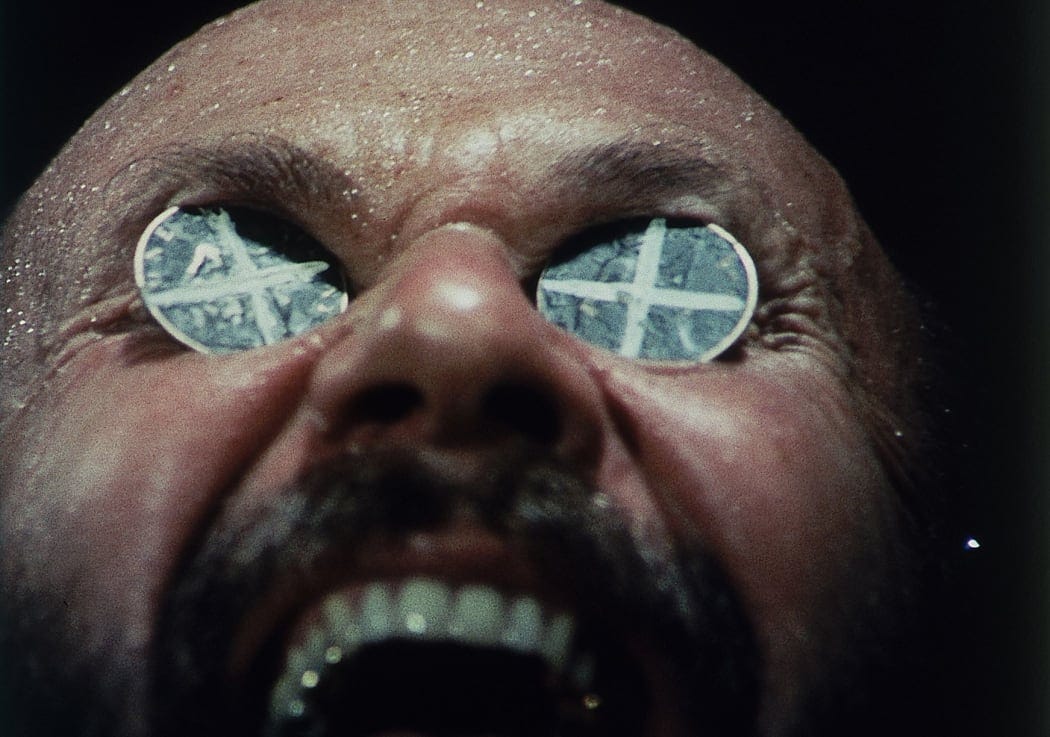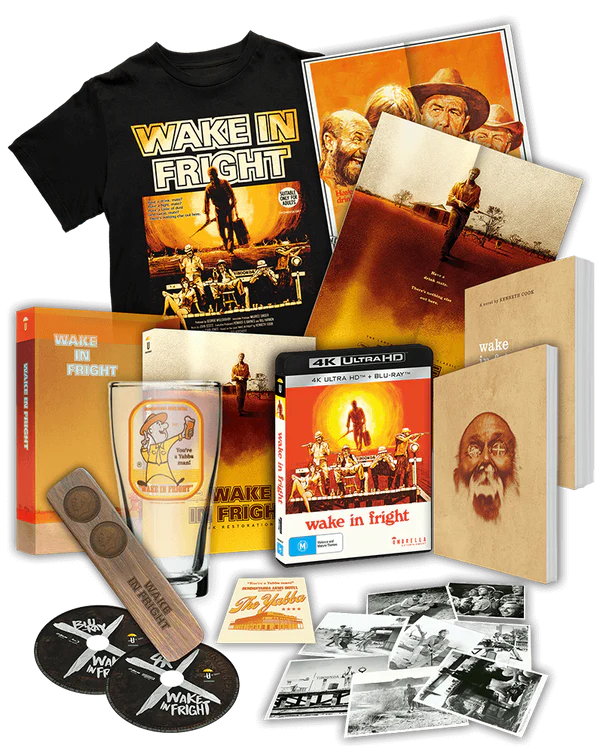Something to watch tonight: Thursday 10 July
Wake in Fright (Kotcheff, 1971)
I mentioned a few weeks ago that the BBC once commissioned me to write an appreciation of Australian Outback horror. The ur-text for that idea is Ted Kotcheff’s Wake in Fright, a terrifying portrait of Australian culture when it is let off the leash thanks to distance from moderating urban norms.
Schoolteacher John Grant (Gary Bond, the first Joseph in Joseph and the Amazing Technicolor Dreamcoat, fact fans) is frustrated that he is still bonded to a remote outback township when he would rather be in the big smoke of Sydney, hanging out with his beautiful girlfriend, Robyn (Nancy Knudsen), especially as it’s Christmas.
Before flying out, Grant has one night in the mining town of Bundanyabba (inspired by Broken Hill), where he gets hooked on the illegal but sanctioned coin flip gambling game of Two-Up. Hoping to win the thousand bucks that would pay off his bond, he in fact loses everything and — hungover — misses his plane. The first of several ‘wakes in fright’ he will experience before the film is over.
No worries, it’s 1971 and there’s plenty of work — he’ll just get a job and go a few days later. Except it’s Saturday and the Labour Exchange is closed. Plied with extravagant amounts of beer by all and sundry — including Chips Rafferty as the local cop in his final performance, a young Jack Thompson and a terrifyingly three-dimensional performance by Donald Pleasance — Grant starts to lose his mind as well as his money.
What’s interesting about Wake in Fright as a horror film is that the antagonists aren’t in any way malevolent or evil. In fact, everyone thinks they are everyone else’s best mate — “ Will you have a drink with me, mate?” is the first thing every (male) character says — and it’s Australia itself that will do him in. An educated, book-reading, man, with artistic pretensions, it’s as if the Outback has decided to teach him a lesson for his snobbery and when his last attempt at escape only finds him looped back to where he came from, he looks like Edward Woodward in another folk-horror of a similar vintage, The Wicker Man.
This time around, I was really struck by the film’s epilogue or coda. Grant — and the audience — see that the ‘Yabba is just another medium-sized town, nothing to be afraid of, and that Pleasance’s “Doc” Tydon isn’t the deranged maniac he thought he was, just a lonely alcoholic who was trying to make a friend.
Once thought to be hopelessly lost, the original camera negative was discovered in 2002 in Pittsburgh of all places, in a shipping container labelled “For Destruction”. That negative has been ‘restored’ twice since then: for a 2008 Madman Blu-ray and last year by new rights holder Umbrella for the new 4K version. Watching it last night, I was struck by how successful that restoration is. It’s a DolbyVision master and the colour is superb, as if every frame has been scrubbed clean of years of Outback dirt.
In 2017, Kriv Stenders directed a two-part miniseries adaptation of Kenneth Cook’s 1961 book for Network 10. Has anyone seen it? It’s a got a great cast (including New Zealand’s Robyn Malcolm).
Further reading and listening
Back in September 2016, I appeared on RNZ Afternoons with Jesse Mulligan to refute David Hepworth’s claim that 1971 wasn’t a great year for cinema and wrote up an article for the website shortly afterwards. Examples include Wake in Fright, The French Connection, Harold & Maude, THX-1138 (also featuring Donald Pleasance), and Death in Venice.
Where to watch Wake in Fright
Worldwide Physical Media: UHD and Blu-ray from Umbrella Entertainment
The ultimate collectors’ edition features a book, T-shirt, Two-Up set and — in horrifyingly poor taste — a souvenir beer pot glass.




